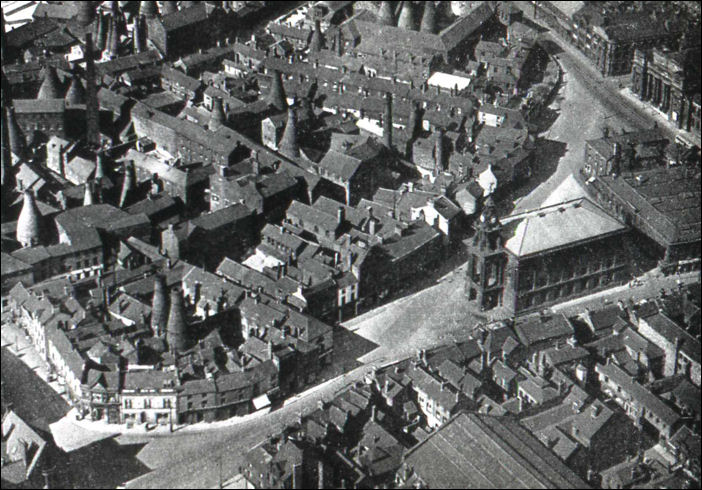|
Royal Staffordshire Pottery
A.J. Wilkinson (Arthur J. Wilkinson, Royal Staffordshire Pottery) was a pottery or potbank at Newport in Burslem, owned by the Shorter family since 1894. A sprawling complex of bottle ovens, kilns and production shops, it lay beside the Trent and Mersey Canal, the artery which provided it with coal and the raw materials for earthenware. In its heyday it employed 400 manual workers. History The pottery had formerly been operated in turn by Hopkin & Vernon, Hulme & Booth, Thomas Hulme, Burgess & Leigh, and Richard Alcock, who enlarged the works extensively. On Alcock's death in 1881, the owners became Wilkinson & Hulme and in 1885 to Arthur J. Wilkinson. The works at first produced earthenware for the home market, but later operations concentrated on white graniteware for the United States. Wilkinson introduced gold lustre on graniteware. In about 1896 A. J. Wilkinson took over the Royal Staffordshire Pottery in Burslem. The pottery was managed by Colley Shorter, an affluent Vic ... [...More Info...] [...Related Items...] OR: [Wikipedia] [Google] [Baidu] |
Pottery
Pottery is the process and the products of forming vessels and other objects with clay and other ceramic materials, which are fired at high temperatures to give them a hard and durable form. Major types include earthenware, stoneware and porcelain. The place where such wares are made by a ''potter'' is also called a ''pottery'' (plural "potteries"). The definition of ''pottery'', used by the ASTM International, is "all fired ceramic wares that contain clay when formed, except technical, structural, and refractory products". In art history and archaeology, especially of ancient and prehistoric periods, "pottery" often means vessels only, and sculpted figurines of the same material are called "terracottas". Pottery is one of the oldest human inventions, originating before the Neolithic period, with ceramic objects like the Gravettian culture Venus of Dolní Věstonice figurine discovered in the Czech Republic dating back to 29,000–25,000 BC, and pottery vessels that were ... [...More Info...] [...Related Items...] OR: [Wikipedia] [Google] [Baidu] |
